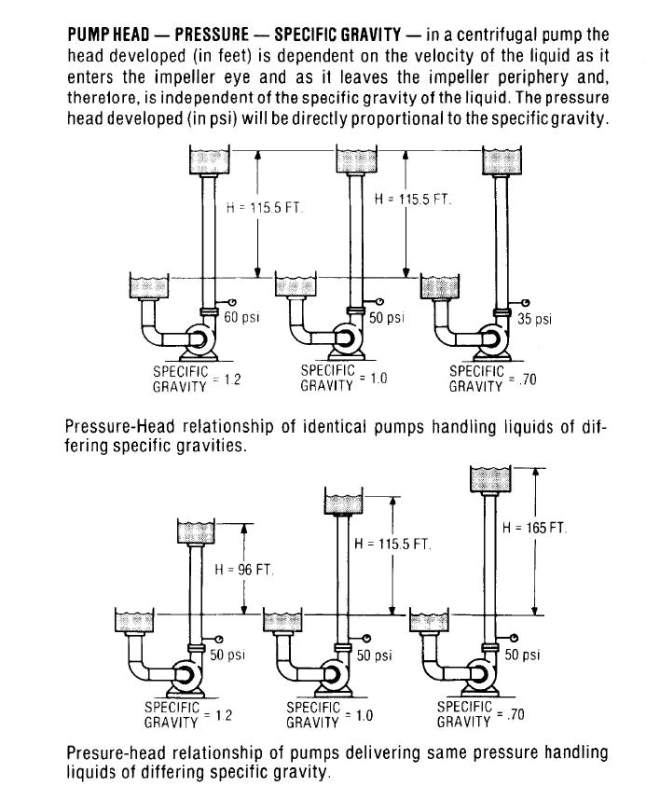Hi everyone.
I have a question about the discharge pressure of a centrifugal pump at fixed speed.
The pump is in discontinuos service and has to transport the liquid from a blanketing vessel to another blanketing vessel (with constant operating pressure)
through a line without control valve.
I have sized the pump for a flowrate of a liquid with a certain density; so i have obtained a head H1 and an associated discharge pressure p1.
Now, if i change the pumped fluid, with a more dense fluid with the same viscosity, the pump head and the volumetric flowrate remains the same,
but the discharge pressure become higher. So what is the pressure profile in the line considering the friction losse are more or less the same in the two cases,
where is the mistake?
thanks
Red.
I have a question about the discharge pressure of a centrifugal pump at fixed speed.
The pump is in discontinuos service and has to transport the liquid from a blanketing vessel to another blanketing vessel (with constant operating pressure)
through a line without control valve.
I have sized the pump for a flowrate of a liquid with a certain density; so i have obtained a head H1 and an associated discharge pressure p1.
Now, if i change the pumped fluid, with a more dense fluid with the same viscosity, the pump head and the volumetric flowrate remains the same,
but the discharge pressure become higher. So what is the pressure profile in the line considering the friction losse are more or less the same in the two cases,
where is the mistake?
thanks
Red.

